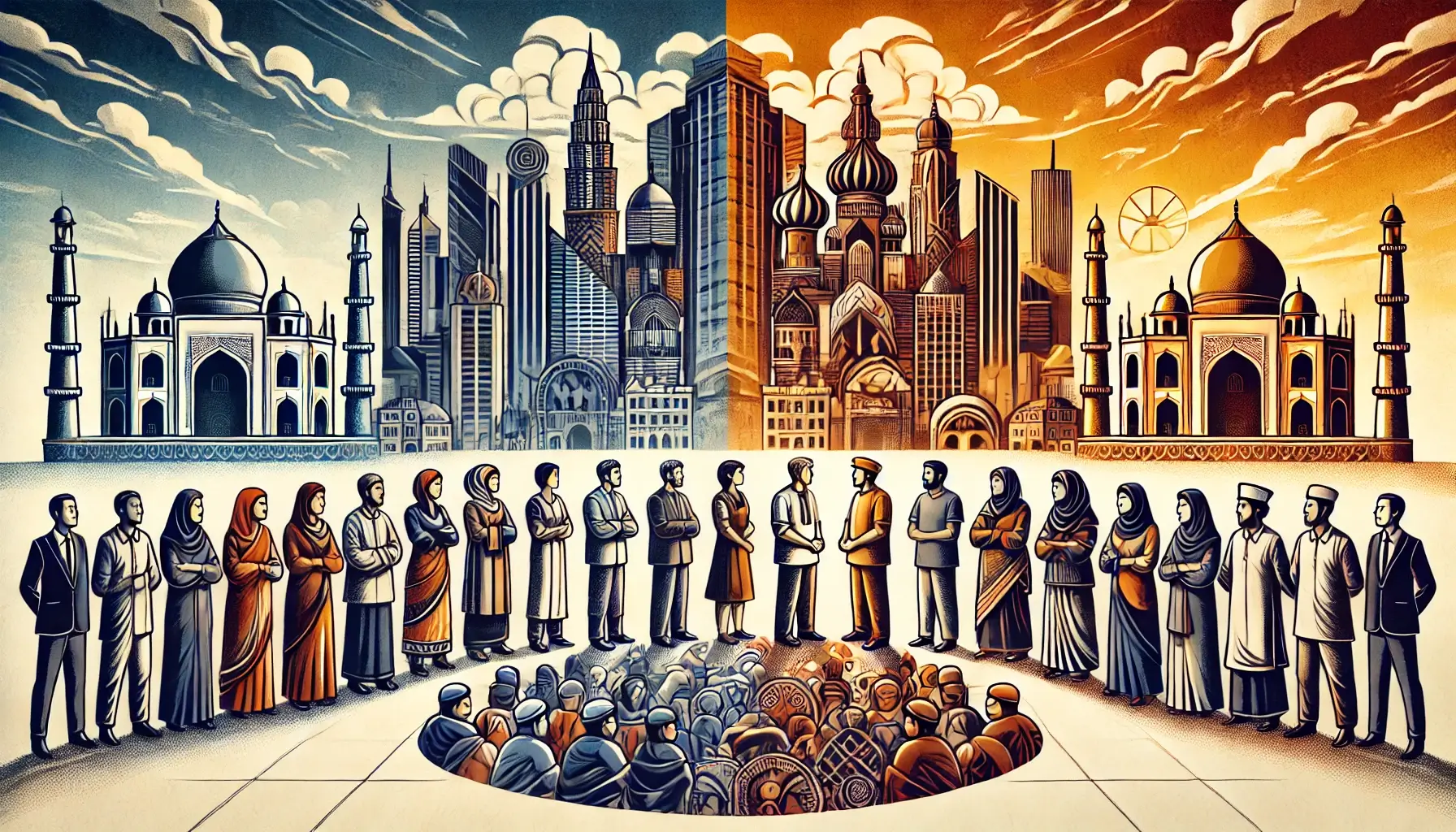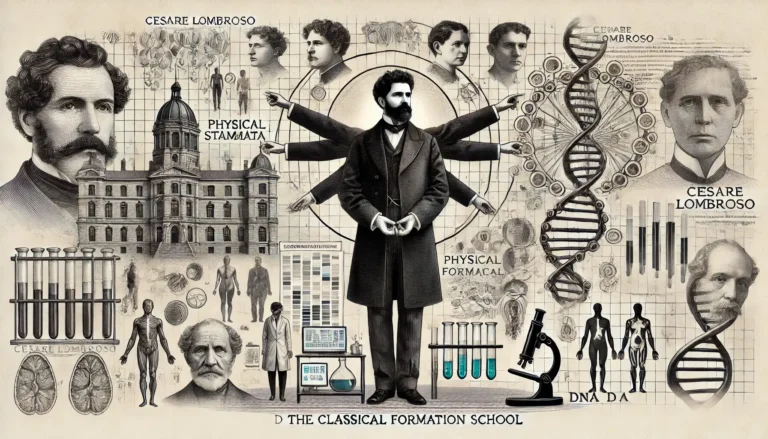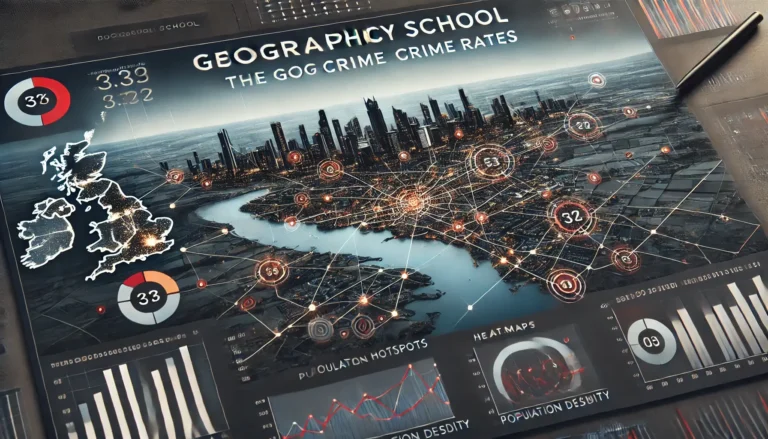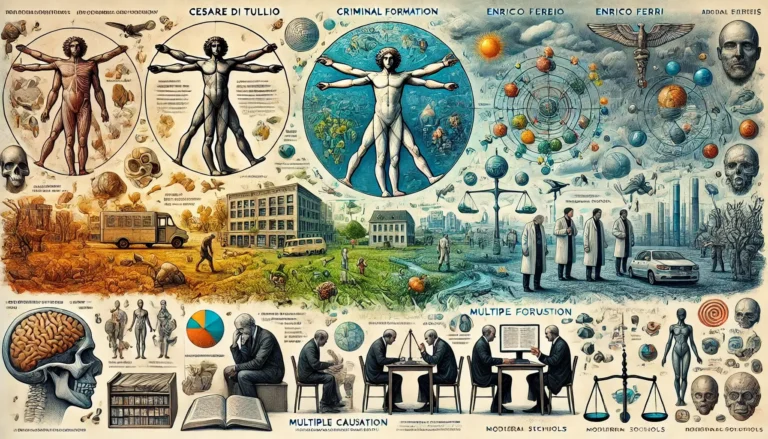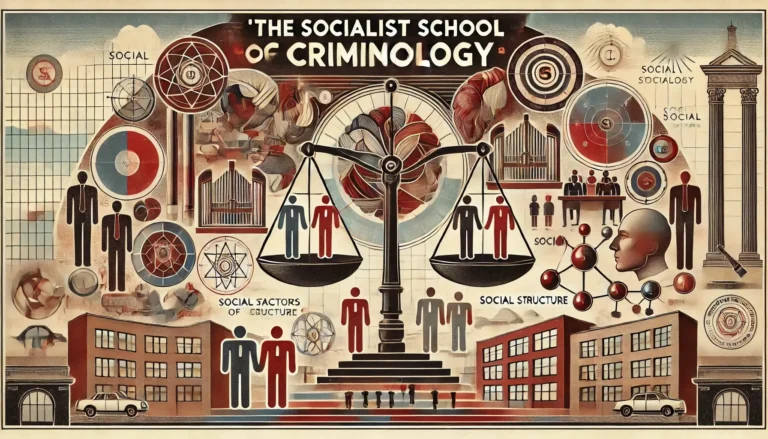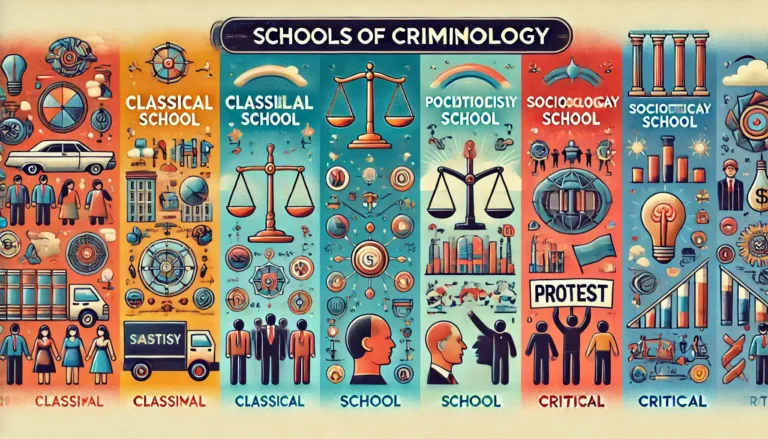Cultural Conflict Theory: Causes, Examples, and Real-World Impact
Introduction to Cultural Conflict Theory
Cultural Conflict Theory is a sociological perspective that explains crime as a result of clashes between different cultural groups, particularly those with conflicting norms, values, and laws. This theory suggests that legal systems often reflect the values of the dominant cultural group, leading to the criminalization of behaviors practiced by minority or subcultural groups. Understanding cultural conflict theory is crucial for comprehending how crime is socially constructed and influenced by power dynamics in society.
Criminal behavior is not always a result of individual deviance but rather a reflection of deeper cultural struggles. When groups with different cultural values interact, conflicts over acceptable behavior, laws, and societal norms arise. These conflicts can escalate into legal issues, leading to disparities in how justice is administered across different cultural groups.
Historical Background and Theoretical Foundations
The roots of Cultural Conflict Theory can be traced back to early sociologists such as Thorsten Sellin, who proposed that crime often results from clashes between the norms of different social groups. Sellin’s work emphasized the idea that legal norms are shaped by cultural traditions, which may conflict with the values of minority groups. Other sociologists, such as George Vold and Austin Turk, further developed the theory by linking cultural conflicts to broader power struggles within society.
Cultural conflict arises when groups with different social norms come into contact, leading to misunderstandings, marginalization, and legal disputes. For example, an immigrant community practicing traditional customs may find their behaviors labeled as deviant or criminal by the dominant legal system. Such conflicts are particularly evident in multicultural societies where legal standards may not accommodate the diversity of cultural practices.
Key Thinkers and Contributions
1. Thorsten Sellin
Sellin argued that primary cultural conflicts occur when people from different backgrounds are exposed to opposing norms, while secondary conflicts emerge within the same cultural setting when subgroups challenge dominant norms. His work highlighted the role of legal systems in reinforcing the power of dominant cultural groups.
2. George Vold
Vold expanded on Sellin’s ideas by integrating them into conflict criminology. He argued that crime is a consequence of ongoing struggles between competing groups, with those in power using laws to suppress opposition.
3. Austin Turk
Turk contributed to the theory by emphasizing the role of law enforcement and the judicial system in maintaining the dominance of one cultural group over another. He asserted that the criminalization of behaviors often serves the interests of the powerful rather than achieving justice.
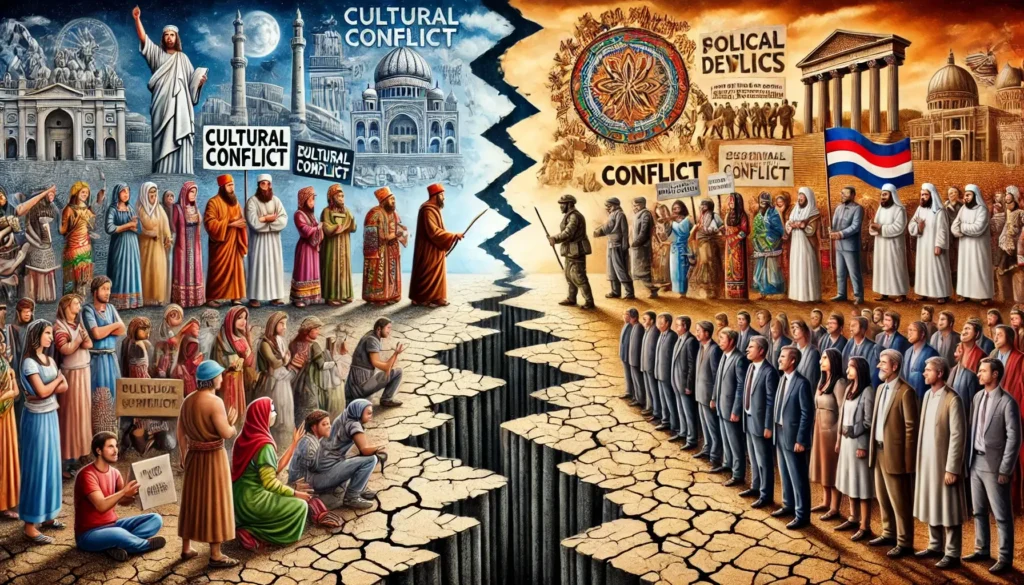
Application of Cultural Conflict Theory in Criminology
Cultural Conflict Theory is widely used in criminology to explain various forms of crime and social deviance. Some key applications include:
- Immigration and Crime: When immigrants bring cultural practices that differ from those of the host country, they may face legal repercussions. For instance, certain traditional marriage practices or religious customs may be deemed illegal in Western countries, leading to legal conflicts.
- Gang Activity and Subcultures: Youth gangs often develop their own set of norms and values that conflict with mainstream society, leading to criminalization and law enforcement crackdowns.
- Drug Laws and Cultural Norms: The criminalization of certain substances has historically been influenced by cultural biases. For example, marijuana was associated with immigrant and minority communities before being widely criminalized in the 20th century.
Real-World Examples of Cultural Conflicts Leading to Crime
1. Prohibition in the United States
The criminalization of alcohol in the early 20th century was a result of cultural conflicts between traditionalists and modernists. The ban led to the rise of organized crime as underground markets flourished.
2. Civil Rights Movement
Many acts of protest and civil disobedience during the Civil Rights Movement were criminalized because they challenged the dominant cultural and legal norms of the time.
3. Religious Conflicts and Legal Disputes
Certain religious practices, such as dress codes, dietary restrictions, or public prayer, have led to legal battles in various countries, highlighting cultural conflicts between secular laws and religious traditions.
Expanding on Cultural Conflict in a Globalized World
1. Cultural Conflict in Multicultural Societies
As globalization increases, multiculturalism has become a defining characteristic of modern societies. This leads to heightened cultural conflicts as diverse groups coexist with differing beliefs, traditions, and norms. Issues such as the integration of immigrants, cultural assimilation, and legal adjustments for minority communities become pressing challenges.
2. Political Influence and Cultural Conflict
Governments often play a role in exacerbating cultural conflicts through policies that favor dominant cultural groups. Immigration laws, education systems, and social policies can either promote cultural understanding or deepen divides.
3. Technology and Cultural Conflict
The rise of digital communication and social media has amplified cultural conflicts by making them more visible and immediate. Online debates over issues such as racial justice, gender equality, and freedom of expression highlight the ongoing struggles between cultural groups.
Criticism and Limitations of the Theory
While Cultural Conflict Theory provides valuable insights into the relationship between culture and crime, it has several limitations:
- Overemphasis on Conflict: Some critics argue that the theory focuses too much on conflict and ignores instances of cultural integration and cooperation.
- Lack of Empirical Evidence: Measuring cultural conflict and its direct impact on crime remains a challenge, making it difficult to establish causality.
- Neglect of Individual Factors: The theory primarily examines group dynamics and cultural clashes, often overlooking individual motivations and psychological aspects of criminal behavior.
Intersectionality and Cultural Conflict
Cultural conflict does not occur in a vacuum; it is deeply intertwined with other social factors such as race, gender, class, religion, and immigration status. The theory of intersectionality, developed by legal scholar Kimberlé Crenshaw, provides a valuable lens through which to examine how overlapping social identities influence individual experiences with crime and justice. For example, an immigrant woman of color may face systemic discrimination that is not solely based on her cultural background but also on her gender and socio-economic status. These layered identities can increase her vulnerability to legal marginalization, harsher sentencing, and social exclusion.
Cultural conflict, when viewed through an intersectional lens, reveals that some groups are disproportionately targeted not because of any inherent criminal tendencies, but due to complex social structures that shape legal perceptions and responses. This perspective encourages policymakers to consider multifaceted social realities when addressing crime and justice reform.
Youth, Identity, and Cultural Rebellion
Adolescence is a period of identity exploration and development, and for many young people from minority or immigrant backgrounds, this process involves navigating conflicting cultural expectations. On one hand, they may be expected to uphold the traditions of their family or community; on the other, they are influenced by the dominant culture surrounding them in schools, media, and peer groups.
This cultural tension often manifests as rebellious behavior—such as rejecting traditional dress codes, joining alternative subcultures, or engaging in acts of defiance like graffiti or public protests. While such behaviors are frequently criminalized, Cultural Conflict Theory invites us to interpret them as expressions of identity in the face of cultural exclusion or marginalization. Understanding the root causes of such rebellion allows educators, policymakers, and law enforcement to respond with empathy and support rather than punishment.

Media Representation and Cultural Bias in Crime
Mass media plays a pivotal role in shaping societal perceptions of crime, often in ways that reinforce cultural biases and stereotypes. News coverage and popular culture tend to overrepresent minority groups as perpetrators of crime while portraying the dominant cultural group more favorably. This skewed representation not only fuels fear and distrust among the public but also legitimizes discriminatory practices in policing and sentencing.
Cultural Conflict Theory helps us see that these media narratives are not neutral; they reflect and reinforce existing power structures. By framing certain cultural expressions as threatening or criminal, the media contributes to the social construction of deviance. In response, criminologists and media analysts advocate for more balanced and culturally sensitive reporting that recognizes the systemic causes of crime rather than focusing solely on individual acts.
Cultural Conflict in International Law and Human Rights
In an increasingly interconnected world, cultural conflict extends beyond national borders and into the realm of international law and human rights. Practices such as corporal punishment, arranged marriages, gender roles, and freedom of expression vary significantly across cultures. When international bodies attempt to standardize legal norms—often based on Western liberal values—conflicts arise with states that perceive these efforts as threats to their sovereignty or cultural integrity.
This tension is evident in international debates about women’s rights, LGBTQ+ protections, or freedom of religion. While some nations view these rights as universal, others argue that such standards do not align with their cultural or religious values. Cultural Conflict Theory highlights the importance of respecting cultural diversity while also striving for fundamental human rights. It encourages a more dialogical and culturally aware approach to international law.
Education and Cultural Integration as Preventive Measures
One of the most effective ways to mitigate cultural conflict is through inclusive and culturally responsive education. Schools serve as critical arenas where children from diverse backgrounds encounter each other and develop their understanding of social norms. When education systems promote respect for cultural differences and encourage critical thinking about social justice, they lay the groundwork for peaceful coexistence.
Educational policies that include multicultural curricula, anti-bias training, and intercultural dialogue initiatives help reduce prejudice and foster empathy among students. Moreover, educational institutions can partner with community leaders to address specific cultural tensions and create safe spaces for expression and learning. Such efforts not only prevent crime but also promote a more cohesive and equitable society.
Policy Recommendations Based on Cultural Conflict Theory
To effectively address the root causes of cultural conflict and its manifestation in crime, policymakers must adopt a holistic approach that recognizes the role of cultural dynamics in the legal system. Key recommendations include:
- Inclusive Legislation: Involve representatives from minority and cultural communities in the lawmaking process to ensure that laws reflect the diversity of society.
- Legal Reform: Review and amend laws that disproportionately criminalize cultural practices, especially those related to religion, language, and tradition.
- Training for Justice Professionals: Provide ongoing education for police officers, judges, and lawyers on cultural competence and bias awareness.
- Community Engagement: Support programs that foster intercultural dialogue and cooperation between law enforcement and minority communities.
- Research and Data Collection: Encourage academic institutions to conduct in-depth research on how cultural factors influence criminal justice outcomes.
Implementing these recommendations can reduce cultural tension, promote social justice, and build trust between diverse communities and legal authorities.
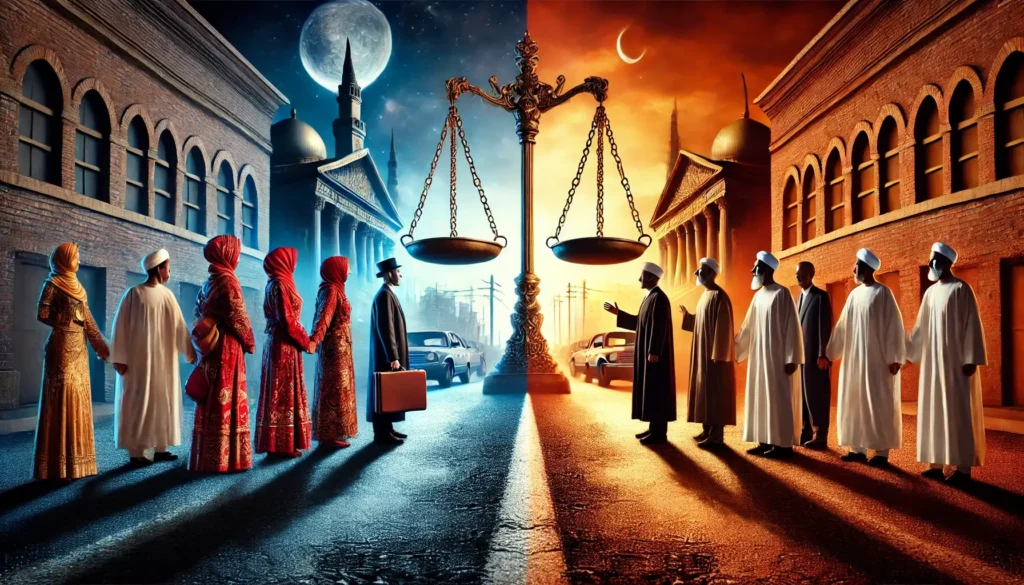
Conclusion: Relevance of Cultural Conflict Theory Today
Cultural Conflict Theory remains relevant in contemporary criminology, especially in an era of increasing globalization and cultural diversity. By analyzing crime through the lens of cultural clashes, policymakers and law enforcement agencies can develop more inclusive legal systems that account for cultural differences. Addressing cultural conflicts through dialogue and legal reforms can help reduce crime rates and promote social cohesion.
Understanding Cultural Conflict Theory is essential for developing fairer legal systems and improving cross-cultural relations. By acknowledging the role of culture in shaping crime and legal responses, societies can move toward more just and equitable approaches to crime prevention and law enforcement.
💬 What are your thoughts on cultural conflicts in today’s society? Share your views in the comments!
📚 References
- Sellin, T. (1938). Culture Conflict and Crime. New York: Social Science Research Council.
- Vold, G. B. (1958). Theoretical Criminology. Oxford University Press.
- Turk, A. T. (1969). Criminality and Legal Order. Rand McNally.
- Akers, R. L., & Sellers, C. S. (2013). Criminological Theories: Introduction, Evaluation, and Application. Oxford University Press.
- Chambliss, W. J., & Seidman, R. B. (1971). Law, Order, and Power. Addison-Wesley.
- Reiman, J., & Leighton, P. (2020). The Rich Get Richer and the Poor Get Prison. Routledge.
- Crenshaw, K. (1991). Mapping the Margins: Intersectionality, Identity Politics, and Violence against Women
- UNODC (2023). Global Study on Legal Diversity and Cultural Conflict. United Nations Office on Drugs and Crime. https://www.unodc.org

